
Not on camera! The hidden hedgehogs of CAT
November 2, 2020Home » Not on camera! The hidden hedgehogs of CAT
One of our best loved mammals, the hedgehog was this year added to the Red List of endangered species. Dulcie Fairweather takes an in-depth look at the threats to this once common mammal, and how we can help bring this indicator species back from the brink.
We know they are there. We have seen the signs. They have even been spotted speeding past CAT’s café by students and volunteers. But – so far – these enigmatic critters are being rather camera shy!
The hidden hedgehogs of CAT have been the most challenging creatures to capture on film during BBC Autumnwatch. We have some great footprints that they left while feeding, and we have found tell-tale scats, so we know they are present.
This is positive news given that hedgehogs are – as of this year – on the IUCN Red List (a database of the world’s threatened species).
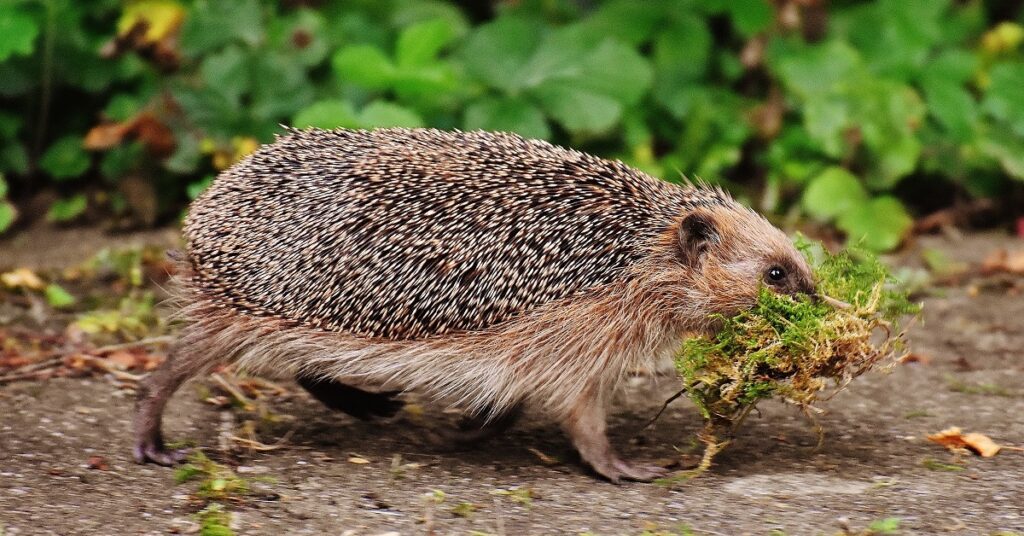
Sharp decline
The UK’s mammals are faring badly, with greater than 26% of species at risk of disappearing altogether, including hedgehogs. According to the Mammal Society’s latest population review, estimates have reduced from 1.5 million individuals in 1995 to a mere 500,000 in 2018.
Hedgehogs – which were voted Britain’s favourite mammal in a national poll – were once common, with an estimated 30 million of the spiny animals roaming in cities and countryside in the 1950s. The definitive reason for falling hedgehog numbers are unknown, although there are numerous candidates which are all involved to a varying extent.
Sufficiently protected by its spines, the hedgehog has very few natural predators. Their highly specialised coat contains around 7,000 spines designed to defend against aggression. They will roll up tightly into a ball and raise their spines, presenting a predator with a sphere of spikes.
Thanks to this impressive adaptation, the badger is the only creature strong enough to overcome the spiny defences – although this natural predator-prey relationship has not been specifically linked to the hedgehog’s demise.
While badgers may play a role locally, hedgehogs are absent in many areas where there are no badgers and, in areas where nesting and feeding sites are plentiful, the two species co-exist. Competition for the same food has been cited as a possible source of contention, as both animals favour soil invertebrates, such as earthworms and beetle larvae.
However, long-term, widespread declines in hedgehog numbers are more likely to be due to a combination of factors, notably habitat loss or degradation, and road casualties.
Habitat loss

Sadly, to the great detriment of the hedgehog, there has been a dramatic loss of the UK’s hedgerows since the Second World War. Agricultural management has the most impact on hedgerows. Field enlargement, excessive use of fertilisers and pesticides in intensive farming, a decline in traditional management techniques like hedgelaying and general neglect has led to a substantial decline.
Hedgehogs rely on hedgerows, a component of their name, as they provide an important role as wildlife corridors. They are fundamental in allowing critical dispersal between isolated habitats. Traditional roughly grazed pasture is an ideal habitat for hedgehogs with edges and hedges to provide shelter and plenty of worms and insects for food.
Measures desperately need to be taken to increase the quantity and quality of hedges, so that they can continue to support a wealth of wildlife, particularly the hedgehog. This could be achieved by restoring and planting more hedgerows, field margins and grasslands to increase the abundance and diversity of invertebrates. Farmers should be rewarded for wildlife-friendly farming practices and be given access to support to help them transition away from intensive farming.
The State of Nature report published in October 2019 also found that the area inhabited by officially designated “priority species” has shrunk by 27%. These priority species – deemed most important and threatened – include hedgehogs, hares and bats, many birds such as the willow tit and the turtle dove, and insects such as the high brown fritillary butterfly.
Climate change impacts
Global warming is also posing a existential threat to hedgehogs. As hibernating mammals, the uncertainty caused by the warmer, wetter winters predicted under existing climate models for the UK may have detrimental impacts on hedgehogs.
Wildlife hibernate because there is not enough food available to justify the energy expenditure of foraging. But our changing climate and subsequent warmer winters may cause hogs to wake up more often during a season where food is at its lowest. Without enough sustenance to replace the energy they use trying to forage during winter, hedgehogs may starve.
Roads and housing developments
A nocturnal species, the hedgehog will travel long distances in their nightly forages for food and will actively seek out hedgerows for essential refuge. In fact, these incredible mammals roam an average distance of 2km in a single night. Male hogs can cover up to 3km in one night in their determined search of females during the breeding season (between April and September).
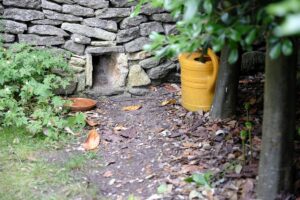
Road collisions are the most urgent threat to hedgehogs, with the Mammal Society estimating a staggering 167,000 – 335,000 animals killed annually. Their research suggests that fatality probability increases where there is a combination of favourable habitat and human dominated areas. Using data collected from the public, high risk areas are continuously being identified, with possible solutions such as reduced speed zones and building bridges or tunnels.
With more roads and housing developments being built, we are seeing a huge loss of connectivity between green spaces, leaving hedgehogs isolated and more vulnerable to local extinction. A viable population of urban hedgehogs is thought to need around 0.9km² of well-connected habitat.
A successful campaign, led by The British Hedgehog Protection Society, lobbied for a condition to planning guidelines that require hedgehog highways be included in new developments. Small holes of 13cm² will be included in the base of fences of new builds, nationwide. This is a fundamental victory for the hedgehog, but more needs to be done. The system needs reforming to ensure that nature is factored into all future planning decisions.
A helping hand
A charismatic and iconic mammal, it is hard to imagine our natural landscape without the hedgehog. But, unless more action is taken, this could become a frightening new reality. With a dwindling population and an overwhelming combination of pressures that jeopardise their future, it does sound quite bleak for the hedgehog. You might be holding your head in your hands, wondering what on earth you can do to help.
Do not despair. There is still time to save hedgehogs. And we all have a part to play in the effort to protect these fascinating creatures.
Our backyards and gardens have been recognised as potential havens for hedgehogs, providing an invaluable source of food, both natural and supplementary, as well as many potential nest sites for breeding, resting and hibernation.
For these reasons, urban areas have become a critical stronghold for hedgehogs in recent years. Indeed, studies have shown rural hedgehog numbers to stand somewhere in the region of 20-70 individuals per square km compared to upwards of 80 in urban settings.
Unfortunately, British gardens are at risk of becoming poorer homes for wildlife. Increased paving, decking, reduced plant life, impermeable boundaries, the use of slug pellets, strimming and bonfire burning all contribute to the plight of hedgehogs.
But, if you follow some of these simple tips, hopefully you’ll have regular visits from our spiky friends – and more luck spotting them than we’ve had!
No matter how small a space you may have, there are plenty of hedgehog-friendly practices you can try.
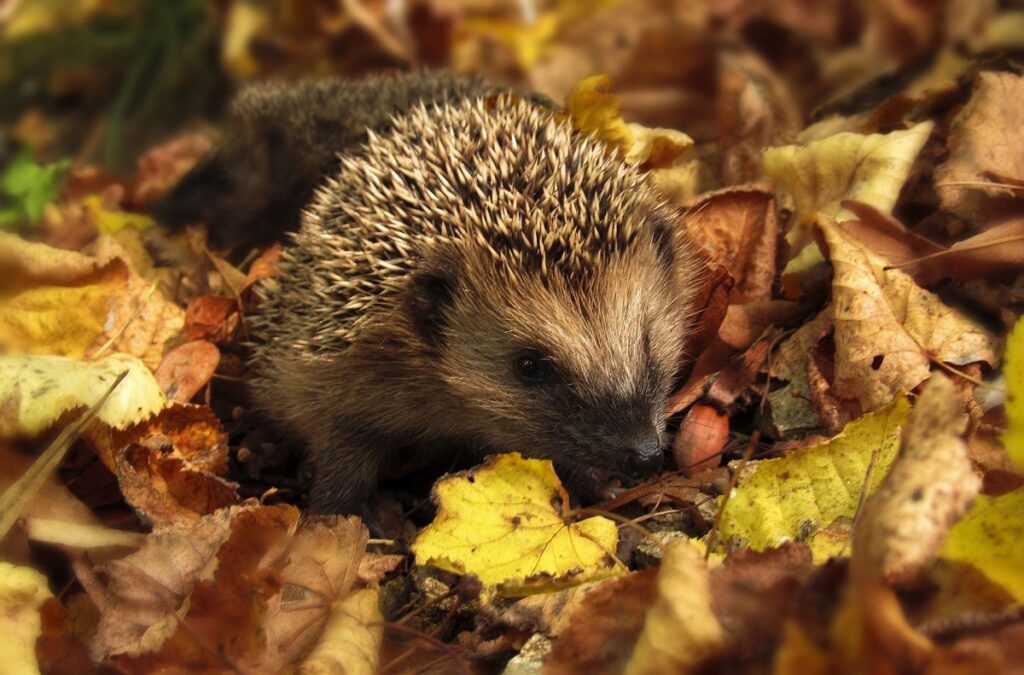
1. Messy is good
Make sure your garden is attractive to hedgehogs by leaving compost heaps (an attractive nesting site), overgrown areas and log piles as they are. Keeping fallen leaves on the ground is especially useful for breeding and winter nest building. Leaf piles are also great for creepy crawlies, a.k.a. hedgehog food.
Mosaic grass management provides the mix of long grass, short turf, open soil and tussocks needed for foraging and day nesting. Developing nectar sources and herbaceous vegetation provides the diverse microhabitats needed for the invertebrates that hedgehogs rely upon. Edge habitat is especially important as hedgehogs often navigate landscapes by following linear features.
2. Go chemical free
Avoid chemicals where possible and use organic alternatives where necessary. Pesticides, rodenticides and herbicides have adverse effects on our wildlife. For example, herbicides can lead to a decrease in the number of earthworms in lawns resulting in less food for hedgehogs and other insecticides can reduce the number of other invertebrates available for the hedgehogs to eat.
Hedgehogs are an ‘indicator species’, meaning a decline in their numbers can tell us a lot about the state of our other nature.
Wool pellets, nematode treatments, salt, seaweed, broken egg shells or coffee grounds are popular alternatives. However, the best option for slug control – is the hedgehog! One of the main predators of slugs and snails, it is in a gardener’s interest to provide a safe place for hedgehogs in their garden.
3. Invite hogs to dinner
With their natural food sources diminishing, putting supplementary food and a shallow dish of water in a sheltered spot can sustain hedgehogs when times are tough. Specially formulated hedgehog foods now exist and can be bought from most local pet and garden stores, but you could also provide meat-based wet cat or dog food as well.
4. Recruit your neighbours
In a time where we may ourselves feel more isolated than ever, perhaps take the opportunity to reach out to your neighbours to encourage hedgehog friendly features. As well being a proven method for helping hedgehogs, creating highways is also a great way to develop a good relationship with your neighbours and improve your local community.
Well-connected green spaces, linked with surrounding gardens, will also reduce the need for hedgehogs to cross roads. Ultimately, ensuring hedgehogs can pass freely through your garden is the most important thing you can do to help them. There are around 15 million gardens in the UK covering half a million hectares – we absolutely have the means of providing extensive hoggy habitat.
Managing woodlands for wildlife
Here at CAT, we sustainably manage our woodland to benefit wildlife and improve biodiversity. One of our traditional methods for helping to support hedgehogs is leaving plenty of brash piles as habitat and a means to encourage a rich feast of invertebrates.
We use footprint tunnels to survey our mammal population, and have recently enjoyed some success with a visiting hedgehog. Footprint tunnels are cheap and easy to construct and can be placed along linear features such as hedgerows, fences and walls. Pieces of A4 paper are attached to the inside of the tunnel, alongside two strips of non-toxic ink and a handful of meaty flavoured cat, dog or hedgehog food. If you are lucky, you will find a flurry of distinctive prints splattered across your paper (they look like little hands!) There is a wonderful feeling of excitement and anticipation when checking the tunnels every morning – especially as you never know what curious creature you may attract.
If you manage to detect hedgehogs then a trail camera is a brilliant way of observing behaviour and sharing your successes with the local community – footage of a hungry hog may encourage more people to join the collective effort!
Time to act
Hedgehogs continue to face pressures in the rural landscape and from urban development, but public efforts to improve garden habitats and connectivity might be giving them a fighting chance. By making our homes more hog friendly, we have the power to help reshape the future of our beloved hedgehog. But, in the face of growing odds, this isn’t enough – we also need the government to affect real change at a legislative level to protect and restore habitats and highways for hedgehogs, and promises to tackle climate change need turning into action.
About the author
Dulcie joined the CAT woodland team as Natural Resource and Volunteer Officer in August 2020. She has spent the first few months of her role setting up camera traps and footprint tunnels in preparation for Autumnwatch.
She has a BA (Hons) in Marine and Natural History Photography, a course that devoted heavy emphasis on environmental subjects and concerns.
Related Pages
Related news

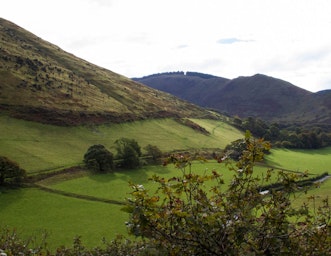
CAT Conversations: Sandy Stevens, CAT graduate
17th April 2025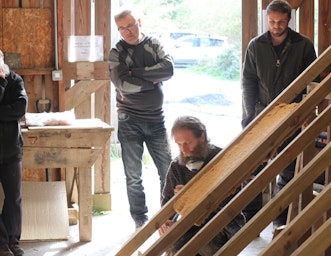
CAT stories – Nick Parsons and Mike Russell
29th January 2025
Ready for retrofit
29th January 2025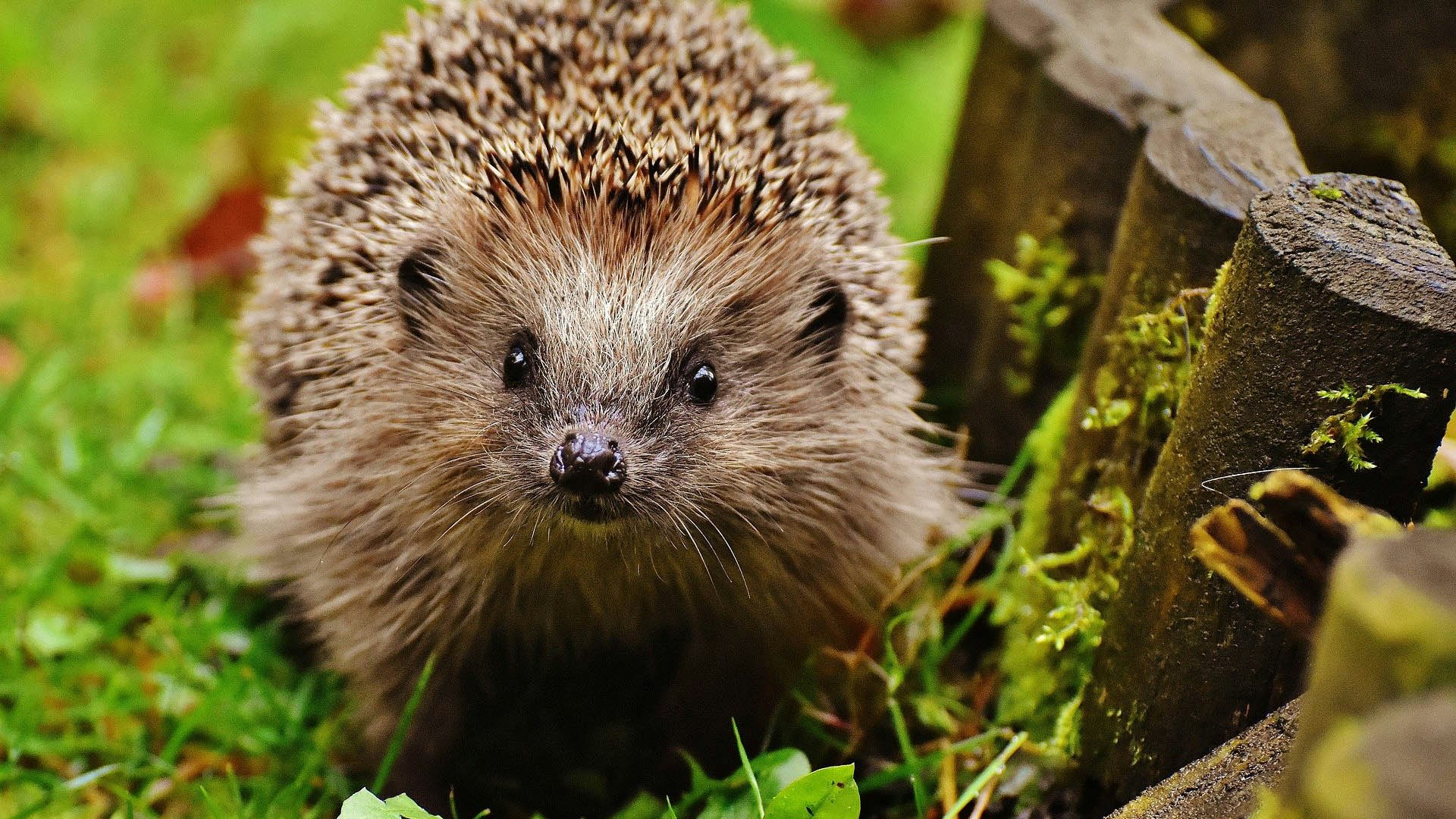
AUTUMNWATCH QUIZ
EMAIL SIGN UP
Keep up to date with all the latest activities, events and online resources by signing up to our emails and following us on social media. And if you'd like to get involved and support our work, we'd love to welcome you as a CAT member.
